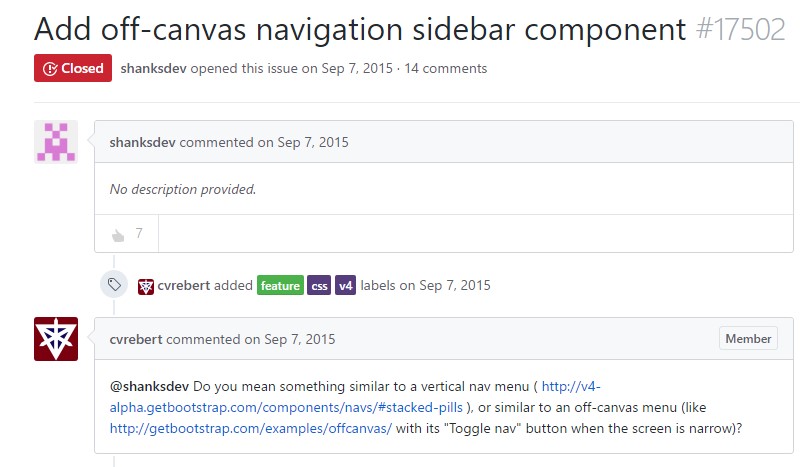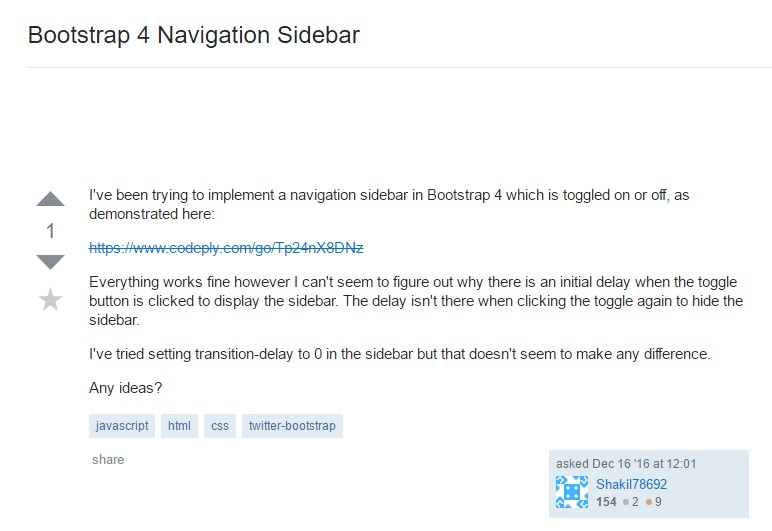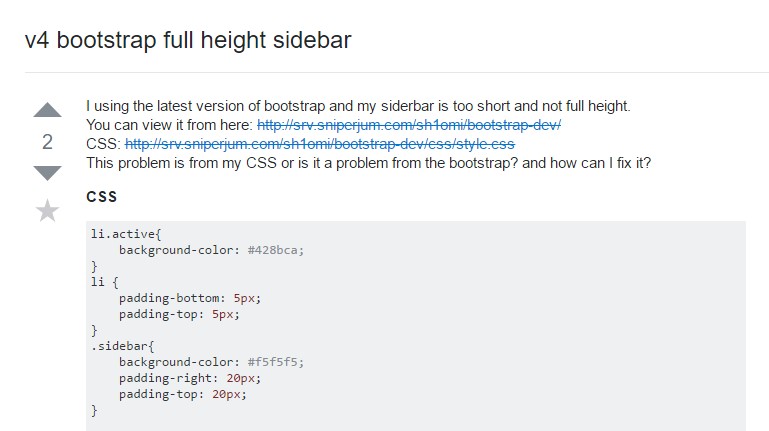Bootstrap Sidebar Example
Overview
Throughout most of the webpages we just recently see the material stretches from edge to edge in width with a convenient site navigation bar above and simply simply becomes resized when the identified viewport is achieved and so somewhat the showcased information fluently applies the whole width of the page accessible. But at a particular events the desired target the pages ought to serve require along with the fluently resizing material section another area of the available display width to get selected to a still vertical element together with several hyperlinks and material in it-- in other words-- the famous from the past Bootstrap Sidebar Toggle is needed.
Efficient ways to use the Bootstrap Sidebar Toggle:
This is rather old method however in the case that you actually want to-- you can make a sidebar element with the Bootstrap 4 framework which in addition to its flexible grid system additionally provide a number of classes made particularly for establishing a secondary level site navigation menus being docked around the page.
But why don't we begin it quick-- by means of simply just nesting some rows and columns -- It is supposed this might be the easiest tactic. And also by nesting I intend you have the ability to gave a .row feature set inside a column one-- it generally performs the same solution with the exception of the available columns in a single line limit-- in case you nest a row within a column you can surely have up to the column's width spanning inner columns within it just before they wrap to a new line.
So let us say we need a right coordinated Bootstrap Sidebar Submenu having several information within it and a principal page to the left of it. We have to set the grid tier down to what we wish to maintain this arrangement prior to the sidebar and the basic web content stack around each other-- let us state-- medium and up. And so a workable strategy obtaining this might be this:
First we really need a container feature to maintain the columns and rows and since we are actually developing something a little bit more challenging the .container-fluid class might be the right one to specify it to-- by doing this it will definitely constantly spread over the whole visible width provided.
Next we need a .row to cover the principal system into which in our situation would be a wide column for the web content and a more compact-- for the sidebar-- let's say we'll separate the width in 9 by 3 columns in width. Therefore the first column element must possess .col-md-9 and the second one - .col-md-3 class added.
Next within these kinds of columns we can just build some supplemental .row elements and stuff them up up with some content creating 1st the main web page and after it-- the elements of the sidebar like two smaller sized web pages laid out side by side.
A few additional tips
Additionally in case you need to create a sidebar navigation menu along with the desired .col-* class you can assign it the .sidebar class and wrap the page’s main content into a <main> element applying it the rest width with a .col-* class and appropriate offset equal to the sidebar’s width to make the nicely display side by side.
Also in the event you must develop a sidebar navigation menu together with the needed .col-* class you can certainly assign it the .sidebarclass and wrap the webpage's leading content into a <main> element using it the rest width with a .col-* class and correct offset identical to the sidebar's width to make the nicely display screen side by side.
Check a number of video clip information relating to Bootstrap sidebar
Related topics:
Bring in off-canvas navigation sidebar element

Stackoverflow: Bootstrap 4 Navigation Sidebar

V4 Bootstrap entire height sidebar

Responsive Bootstrap Dropdown Menu Demos
Free Bootstrap Collapse Menu Examples